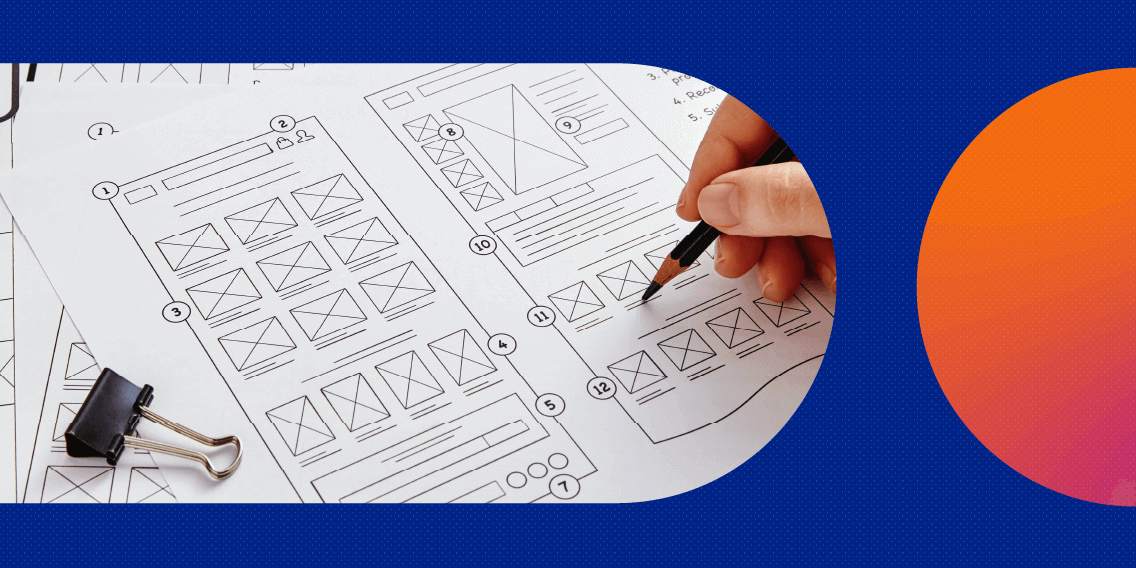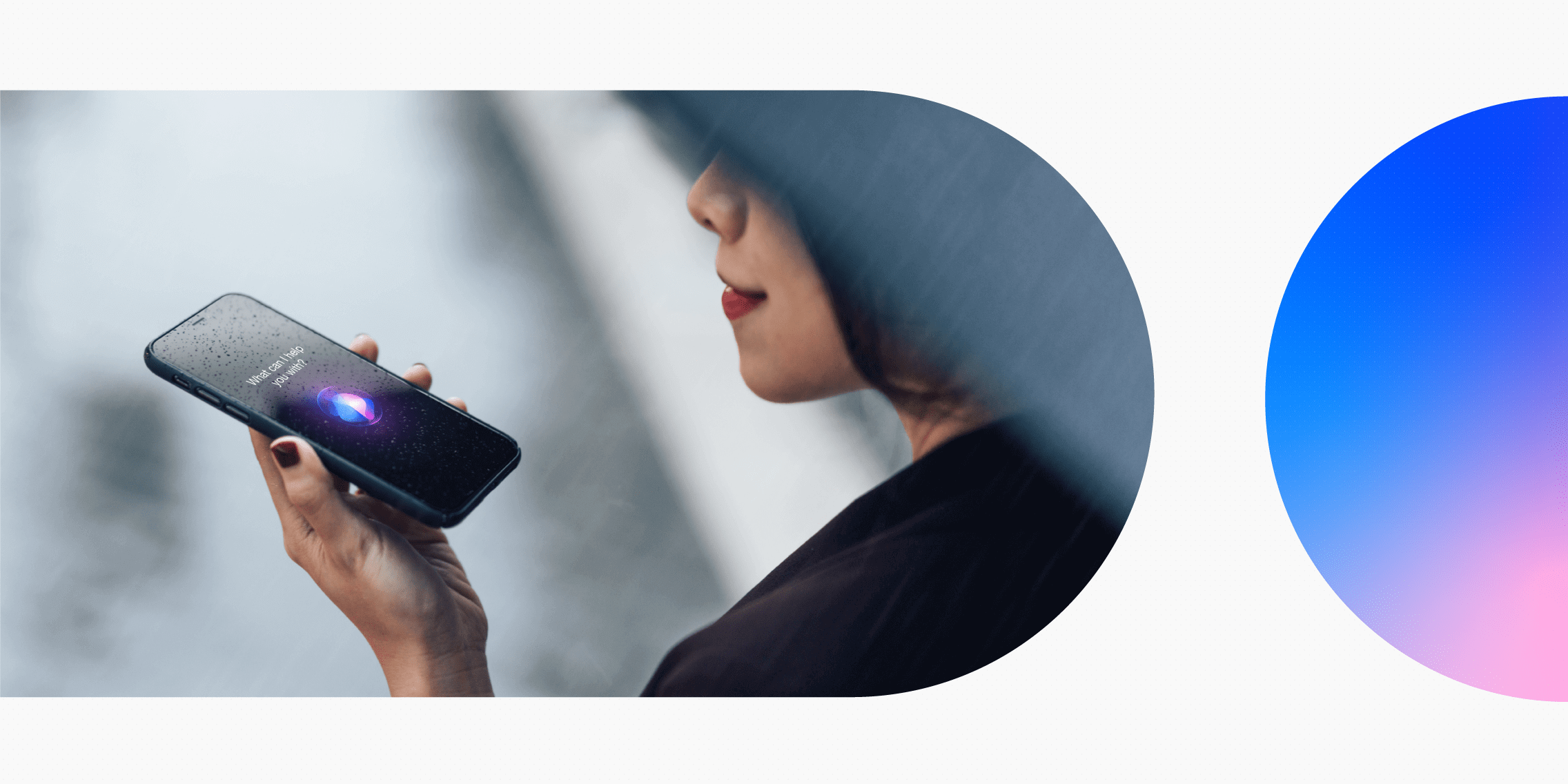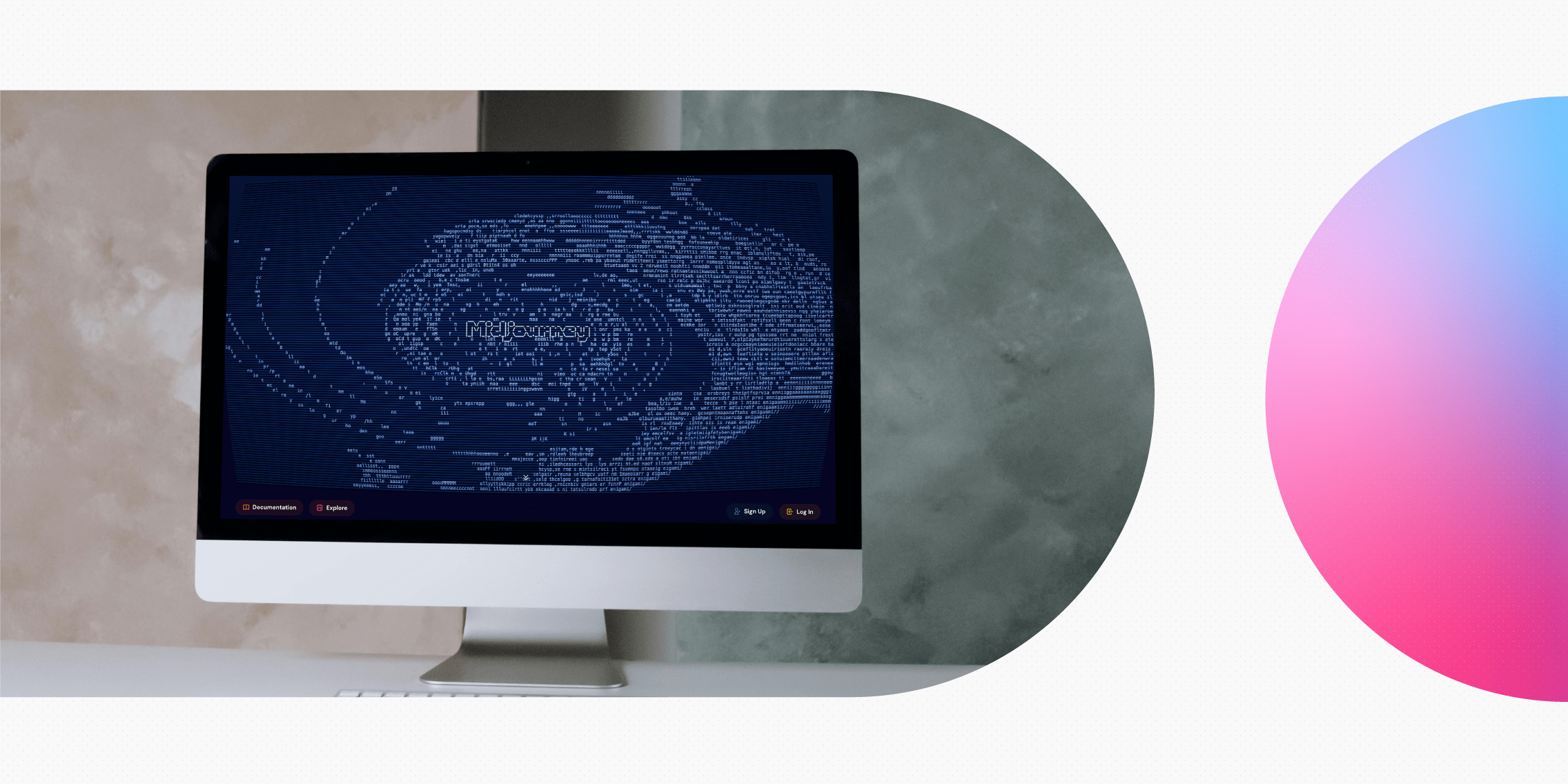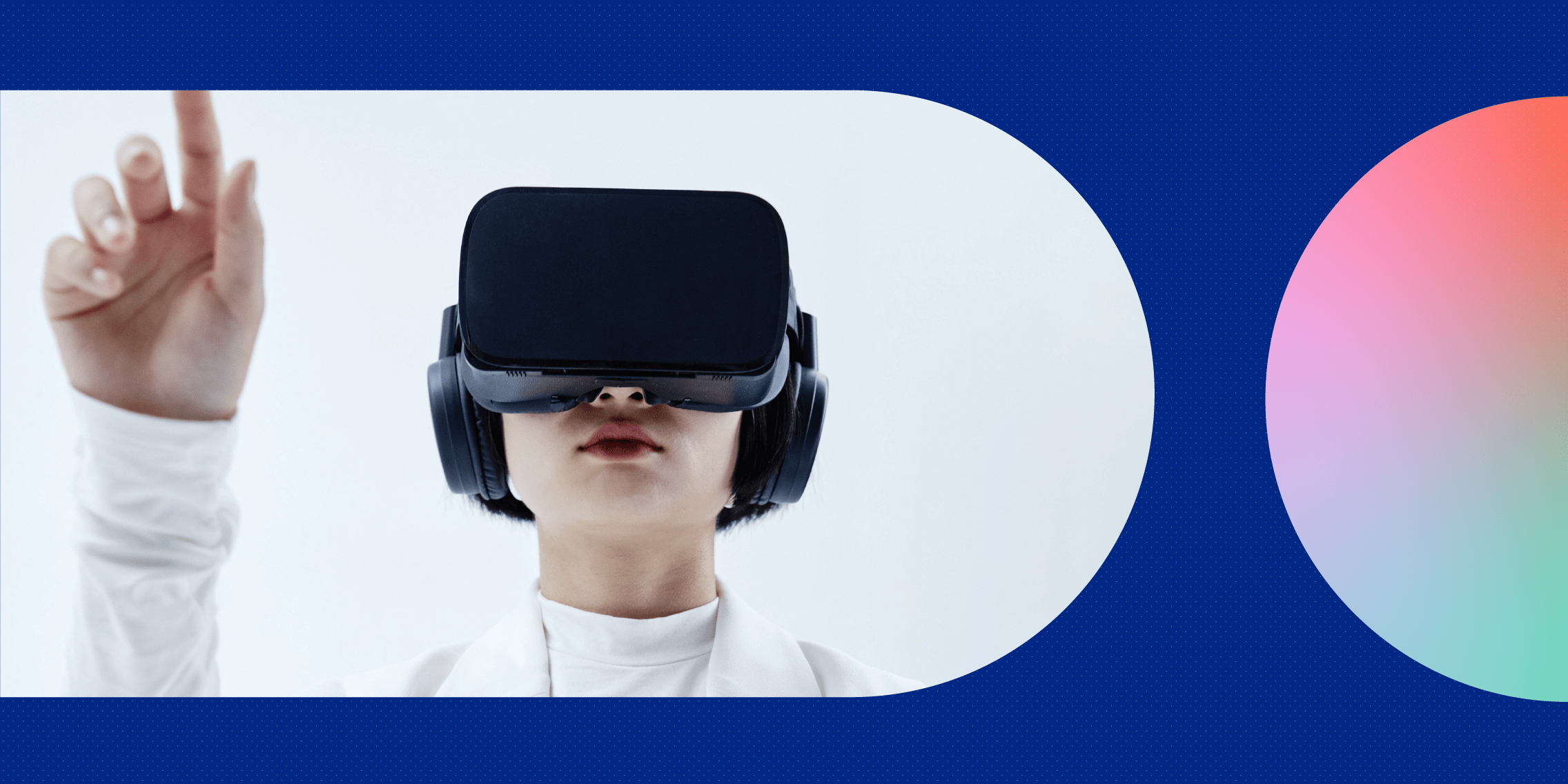The UX industry is in a constant state of evolution. And now, with the rise of AI, we find ourselves entering a new and exciting phase.
As AI technology advances, the opportunities for UX designers are seemingly endless. AI can streamline many aspects of the UX design process—and it’s empowering designers to create more personalised, user-centric products and experiences than ever before.
But, for every opportunity that AI brings, it also presents a whole new set of challenges. It’s both an exciting and testing time for the UX industry and navigating this next wave of trends will prove crucial.
So what are the top UX design trends to watch out for in 2024? Let’s take a look.
1. The unstoppable rise of AI
The trend of all trends, artificial intelligence is transforming the world—and UX—as we know it.
By 2025, it’s estimated that AI and machine learning (ML) will drive over $4 trillion in business value. As it stands, over 80% of businesses have adopted AI in one way or another.
For the UX industry in particular, the impact of AI is huge—and we’re just at the beginning. 53% of companies are currently using AI technology to innovate their products and services; a number that will grow significantly through 2024 and beyond.
Indeed, interest in—and demand for—AI-powered design tools is high and growing. According to Google Trends, the search volume for AI design-related tools and software has increased 1700% from 2022 to 2023 alone. Likewise, searches for the term ‘generative AI’ have increased by 8,500% in the last few years.
Generative AI is especially influential within UX and product design. According to a recent McKinsey report, the top uses for generative AI in product and service development are identifying trends in customer needs, drafting technical documents, and creating new product designs.
This 2024 UX trend in a nutshell
Interest in, and adoption of, AI technology and tools is growing at a rapid rate. Many businesses are already leveraging AI in some way or planning to do so in the near future.
In the UX industry, AI is transforming how designers work and presenting new opportunities and challenges. We’ll explore the impact of AI in more detail as we hone in on further UX trends.
2. AI ushers in a new era of hyper-personalisation
Personalisation has long been a hot topic in user experience (UX) and user interface (UI) design, and it’s nothing new. The likes of Netflix and Spotify have been using machine learning algorithms to provide highly personalised experiences for almost twenty years.
But, with advancements in AI technology, personalisation is now reaching unprecedented levels of complexity and sophistication. Cue the era of hyper-personalisation.
Take Spotify for example. When Spotify first launched, its personalisation capabilities were relatively basic. It relied on simple algorithms that considered factors such as user listening history, favourite artists, and manually curated playlists to generate recommendations.
Now, as AI technology has advanced, Spotify can analyse much larger volumes of data that go beyond user listening history. It can also evaluate contextual factors such as time of day, location, what device is being used, and even what mood the user is in.
Google’s Gemini also speaks to the rise of increasingly bespoke user interfaces that adapt and respond based on the user’s intent.
Launched at the end of 2023, Gemini is being touted as Google’s most capable AI model to date. It’s been built to be “natively multimodal” which means it can seamlessly understand, operate across, and combine different types of information—including text, code, audio, image, and video.
Based on the information and context provided by the user, Gemini will generate a completely custom-made interface to provide the user with the information they want, in the most valuable format—be that a list, a selection of images, a step-by-step guide, or something else entirely. We recommend watching the Gemini product demo to see this AI newcomer in action.
This 2024 UX trend in a nutshell
Through advanced algorithms and data analysis, AI is empowering designers to create interfaces that adapt, anticipate, and cater to the unique needs and preferences of each individual user.
As this trend takes hold, we’ll see more dynamic content personalisation, adaptive interfaces, and contextual awareness—a transformative shift from personalisation to hyper-personalisation.
3. Patterns and principles are emerging for designing AI-assisted experiences
UX designers aren’t only designing with AI. They’re also increasingly tasked with the new challenge of designing for AI. That is, integrating AI into existing products or designing AI-assisted experiences from scratch.
As a result, we’re seeing the first hints of a new trend: the emergence of distinct interaction patterns and principles for designing AI-assisted experiences.
Luke Wroblewski, an internationally recognised digital product leader, introduces three high-level interaction patterns he’s noticing.
The first facilitates direct interaction between the user and the AI. As such, the AI must be integrated in a way that enables the user to provide prompts or instructions to generate a specific output. Here the challenge lies in ensuring that the AI model can interpret different inputs with accuracy.
The second pattern focuses on designing experiences where AI is working behind the scenes. In other words, the user doesn’t interact directly with the AI; but, as they interact with the product, the AI is learning about their behaviours and preferences. If you’re watching videos on YouTube, for example, you’re not explicitly asking the AI to provide recommendations—but it will do so based on what you’ve watched so far.
The third approach looks at integrating AI alongside the usual buttons and menus the user interacts with. In this case, the goal is for AI to assist the user with their tasks—for example, by providing suggestions or completing sentences for you as you type.
Essentially, these patterns offer different ways for users to interact with AI—ranging from direct control to background assistance.
This 2024 UX trend in a nutshell
This trend highlights the importance of considering where and how AI fits into the user experience and the product interface. Just as UX and UI designers use well-defined patterns and principles to create intuitive digital products, so too will these patterns emerge to help designers seamlessly integrate and design for AI. This trend is right in its infancy, so watch this space!
4. UX designers will face new ethical dilemmas
AI brings with it many opportunities—but also many challenges. In 2024 and beyond, UX designers and researchers will navigate uncharted territory in the form of new ethical dilemmas.
The ethical dilemmas and challenges posed by AI are manifold, ranging from data security and privacy to concerns about bias, transparency, consumer trust, manipulative design practices, and unintended outcomes.
Bias in AI algorithms can perpetuate systemic inequalities and hinder efforts to create inclusive and equitable user experiences. As AI becomes increasingly integrated into the design process, UX designers must be proactive in identifying and mitigating biases in AI systems. This will be a huge challenge—and, as yet, there are no clearly defined guidelines or processes in place to tackle it.
Transparency and trust are another major issue, with over 75% of consumers having expressed concerns about AI-generated misinformation. In the years to come, UX designers will need to work harder to gain users’ trust. This will mean designing with transparency, finding ways to communicate how AI is shaping the user experience, and ultimately making sure that the user feels informed and in control.
Then there’s the issue of manipulative design practices. Hyper-personalisation can greatly enhance the user experience—but, by the same token, AI-powered systems can be used to manipulate user behaviour. This gives rise to concerns about addictive design patterns, persuasive technology, and the exploitation of cognitive biases.
Designers must be mindful of the ethical implications of using AI to influence user decision-making and ensure that they’re not compromising user well-being and autonomy.
This 2024 UX trend in a nutshell
Because AI is so new, there are many grey areas to contend with. As they leverage the new opportunities afforded by AI, UX designers will also have to navigate new challenges. We expect (or at least hope) to see an increased focus on ethical, inclusive, and transparent design.
5. Emotional design will become a key differentiator
As AI technology advances and the UX field matures, the goal posts for what constitutes a great user experience are moving. Gone are the days when it was enough to design products that are functional and aesthetically pleasing. Now more than ever, emotional design is what will set exceptional products apart.
Emotional design is the practice of designing products and experiences that connect with the user on an emotional level. It’s about evoking certain emotional responses in the user—and recognising that human behaviour is driven not only by rational decision-making, but also by emotions, feelings, and subconscious desires.
This trend emphasises the role of human psychology in design. But, inevitably, AI also has a role to play here.
AI-powered personalisation, for example, will enable designers to create experiences that are not only tailored to users’ functional needs but also resonate with their emotional preferences. By analysing vast amounts of data about user behaviour and preferences, AI algorithms will be able to identify patterns and trends that both reveal—and predict—users’ emotional states and motivations.
As such, AI will serve as a helpful tool for meeting users’ emotional needs—but emotional intelligence and human empathy will continue to reign supreme.
This 2024 UX trend in a nutshell
AI will level the playing field in terms of creating functional, aesthetically pleasing designs. As such, emotional design will become a key differentiator. Products and interfaces that evoke positive emotions such as joy, delight, trust, and empathy will be more successful in fostering long-term engagement and loyalty.
In 2024 and beyond, UX designers will need to embrace the complexities of human psychology and work harder to connect with their users on an emotional level. This will increasingly mark the difference between good and exceptional UX.
6. Research and strategy—the hottest UX skills on the block
While it’s unrealistic to imagine that machines could eliminate the need for human designers—UX is all about empathy, after all—there’s no denying that AI will change the nature of the UX designer’s work.
In the coming years, research and strategy will have an increasingly important role to play. The true value of UX designers will lie not only in their ability to create awesome user experiences, but most notably in their ability to problem-solve, act strategically, and exercise ‘vision thinking’—that is, to take a holistic perspective and consider the bigger picture.
In their 2024 predictions, Gartner remarks:
A good experienced designer brings insights from research as well as knowledge of human psychology—and blends them with the organisation’s product vision. Advances in AI will mean that designers spend less time building…and more time focusing on solving real problems for users.
As such, skills like research, leadership, and strategic thinking are all among the most in-demand skills for 2024.
This sentiment is echoed in the UX Collective’s State of UX in 2024 report. Fabricio Teixeira and Caio Braga note:
While UI processes tend to become more automated in the future, skills such as UX research and strategy will become more critical than ever. The same is true for conceptual designs and vision thinking. We’ll always have to find the right use cases for new technologies. What will differentiate you as a designer in the long term is to be strategic in your design thinking, more purposeful in your design decisions, and assertive in imprinting your perspective onto the work you produce.
This 2024 UX trend in a nutshell
AI is automating many aspects of the UX design process while emphasising the value of inherently human skills such as strategic thinking and problem-solving. If you want to excel in the industry, focus on improving and applying your research and critical thinking skills for more strategic, user-centric innovation.
If you’re not as confident in your research skills as you’d like to be, consider a professional course in user research. With the UX Design Institute, you can master the research skills that make UX professionals so valuable, learn how to use AI in research in a meaningful way—and future-proof your position in this growing industry.
7. A shifting job market takes UX designers beyond traditional tech
With all these transformations in the industry, it’s no surprise that the UX job market is also shifting. While the traditional tech sector has long been the default arena for UX jobs, that’s changing in 2024.
There are two big drivers behind this trend. First, we’re in the midst of a downturn in the traditional tech sector. In a nutshell, many tech companies accelerated their hiring in the pandemic—only to find that this wasn’t sustainable. Now, post-pandemic, hiring levels have slowed right down in order to return to more normal employee numbers. As such, UX jobs aren’t as easy to come by in the tech sector.
At the same time, industries that haven’t traditionally prioritised UX are now investing heavily in digital transformation and improving the customer experience—resulting in high demand for UX designers. Finance, government, and the medical tech sector are just some areas where UX opportunities are in growing abundance.
Another trend shaping the job market right now is the growing number of junior UX candidates. When the UX bootcamp market exploded a few years back, we saw a surge in free and low-cost programs promising rapid training in UX. But, unlike industry-vetted and university credit-rated courses, the quality of these bootcamps is largely unregulated.
As such, the industry is now inundated with junior candidates who possess UX qualifications on paper but aren’t necessarily equipped for the practicalities of the profession. There may be an increase in the number of entry-level UXers looking for work, but hiring managers are still struggling to find suitable candidates who can actually do the job.
The need for skilled, job-ready UX designers is greater than ever. Those who can demonstrate hands-on proficiency, up-to-date industry knowledge, and a design-thinking mindset will be best placed to get hired.
You can learn more about the difference between bootcamps, free courses, and university credit-rated programs—and their impact on the industry—in this post.
This 2024 UX trend in a nutshell
The UX job market may be changing. But, contrary to widespread belief, it hasn’t reached the point of saturation. UX designers are in high demand, with opportunities opening up in non-traditional sectors like finance, government, and medical tech. UX designers will increasingly find work in alternative industries—and demonstrating up-to-date, practical proficiency will prove key.
For an in-depth exploration of the UX job market in 2024—as well as advice on how to navigate the evolving landscape—check out our full report: Is the UX job market oversaturated? An in-depth analysis and outlook for 2024.
Leveraging the most influential UX trends in 2024 and beyond
There’s one major force transforming and propelling the UX industry in 2024: AI. As AI technology advances and becomes more widely adopted, UX designers are better positioned than ever to create highly personalised, emotionally resonant, and truly engaging user experiences.
However, the rise of AI also brings with it new ethical dilemmas and challenges. UX designers must learn to leverage AI without compromising on inclusivity, transparency, trust, and user well-being.
2024 will be a year of learning, discovery, and innovation for UX designers—and, hopefully, one of better-than-ever products and experiences for end users.
To learn the in-demand UX skills and explore how to integrate AI in a meaningful way in various UX processes, check out our popular university credit-rated courses: Professional Diploma in UX Design, Professional Certificate in Content Design and Professional Certificate in User Research. All our courses are created in consultation with UX professionals and are valued by employers globally.
For more UX industry insights, check out the following:
- How will AI impact the UX design industry? An interview with Nick Babich, Principal UX Designer at Brain Technologies
- The top 5 AI-powered tools for user research (and how to use them)
- AI for UX: 5 ways you can use AI to be a better user experience designer





